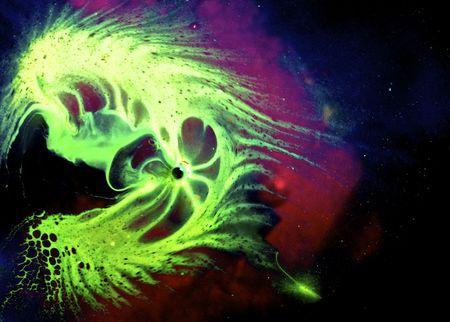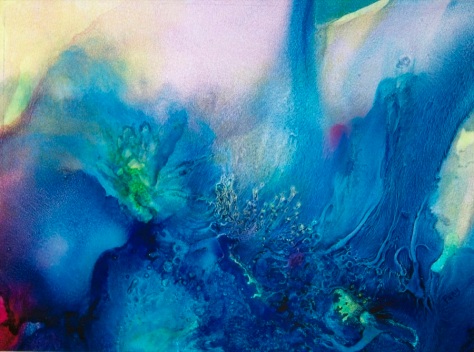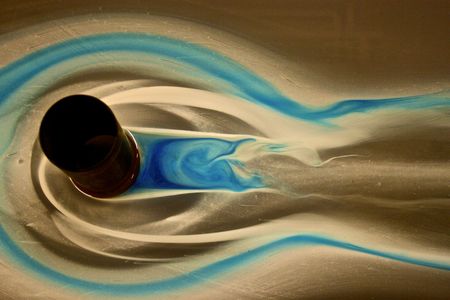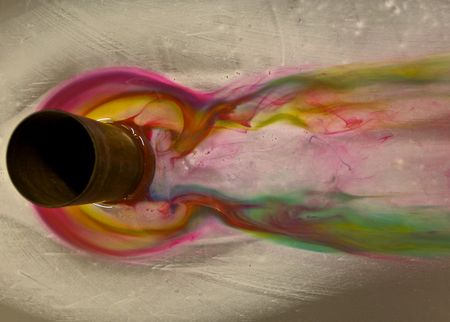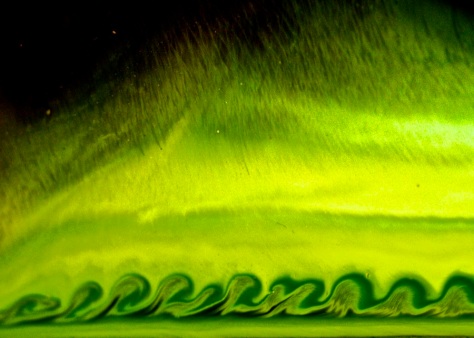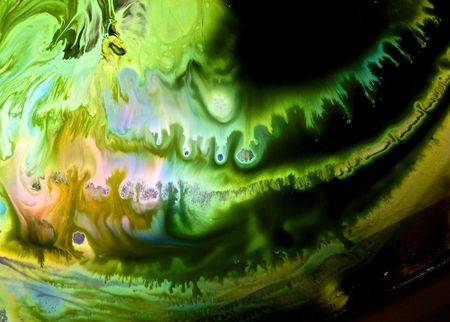Last week I went along to the private view of the ‘Before the Crash’ exhibition mentioned below, and learned some fascinating facts about how it’s possible by scanning to reveal and record the inner surfaces of objects. I wondered whether it was then possible to produce objects based on the scans which are ‘inverse’ – whose insides are outside and vice versa – will have to read about this. Meanwhile, it got me thinking about topology, and about a picture I made recently where surfaces seemed to pass over and under each other in an illogical way; I called it ‘Mobius trip’ and it’s made with light and glass:
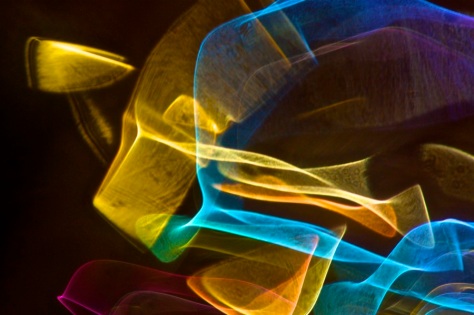
what is inside; what is outside; what is in front of what; the topologistics are baffling
Back in the University lab, the quest to capture vortices proceeds – I tried visualizing them as flow went round a cylinder with a strip light reflection. I liked the way the reflection of the metal grid on the light bent in the water.

neon striplight reflection – the cylinder is on the extreme left of the image
Here is a more straightforward visualization with ink taking up ring forms:

And here are a couple of screenshots taken from movies I made yesterday using perspex sheets and fluids of different viscosities travelling between them:

‘Bubble escape’
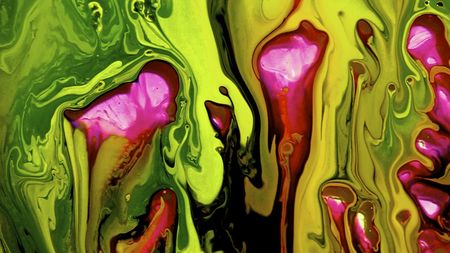
‘Nouveau Art Nouveau’
I love the idea of old art forms being re-interpreted in new terms, and these plant-like forms reminded me very much of one of my favourite artistic movements, Art Nouveau, with its stylized flowers and buds.
